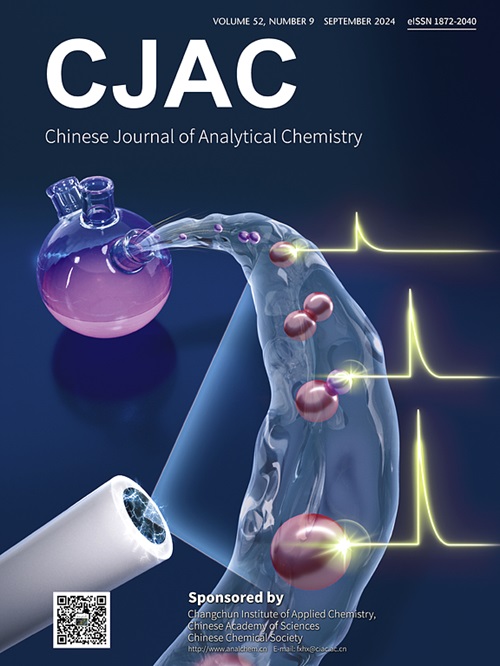用ATR - FTIR和ICP - MS表征美伐尼坦及其与健康相关的研究
IF 1.3
4区 化学
Q4 CHEMISTRY, ANALYTICAL
引用次数: 0
摘要
随着消费者对物质和身体健康追求的不断提升,对麦芬尼姆等天然健康矿物材料的安全性和有效性进行评价显得尤为关键。现代分析技术的进步,使我们能够深入研究这些传统矿物材料的内在特性和作用机理,为麦芬石的应用提供了坚实的科学基础和技术支撑。采用衰减全反射傅里叶变换红外光谱(ATR-FTIR)和电感耦合等离子体质谱(ICP-MS)对美伐尼坦进行了综合分析。通过ATR-FTIR分析,建立了麦香菇的质量控制指纹图谱,并采用相似度评价方法对不同样品间的相似度进行评价。正交偏最小二乘判别分析(OPLS-DA)显示,不同产地的麦芬尼姆样品具有不同的吸收峰,具有可追溯性和可鉴别性。利用ICP-MS技术对麦芬尼姆中的无机元素进行了分析,揭示了许多与人体健康密切相关的元素。结果表明,所建立的ATR-FTIR指纹图谱可有效地用于鉴别和控制麦凡尼姆的质量。麦发菌中无机元素的特征不仅可以帮助区分其来源,还可以为目前麦发菌在保健中的应用提供理论依据。本文章由计算机程序翻译,如有差异,请以英文原文为准。

Characterization and Health - related Study of Maifanitum by ATR - FTIR and ICP - MS
With the continuous rise of consumers' material and physical health pursuit, it is particularly critical to evaluate the safety and effectiveness of natural healthy mineral materials such as Maifanitum. The progress of modern analytical technology enables us to deeply study the internal characteristics and mechanism of these traditional mineral materials, providing a solid scientific foundation and technical support for the application of Maifanitum. A comprehensive analysis of Maifanitum was conducted using attenuated total reflection Fourier transform infrared spectroscopy (ATR-FTIR) and inductively coupled plasma mass spectrometry (ICP-MS). The ATR-FTIR analysis established a quality control fingerprint for Maifanitum, and the similarity evaluation method was employed to assess the similarity between different samples. Orthogonal partial least squares discriminant analysis (OPLS-DA) analysis revealed distinct absorption peaks among Maifanitum samples from different production areas, enabling traceability and identification. ICP-MS technology was utilized to analyze the inorganic elements in Maifanitum, revealing numerous elements closely associated with human health. These findings indicate that the established ATR-FTIR fingerprint can be effectively used to identify and control the quality of Maifanitum. The characteristics of inorganic elements in Maifanitum can not only help to distinguish its sources, but also provide a theoretical basis for the current application of Maifanitum in health care.
求助全文
通过发布文献求助,成功后即可免费获取论文全文。
去求助
来源期刊
CiteScore
3.60
自引率
25.00%
发文量
17223
审稿时长
35 days
期刊介绍:
Chinese Journal of Analytical Chemistry(CJAC) is an academic journal of analytical chemistry established in 1972 and sponsored by the Chinese Chemical Society and Changchun Institute of Applied Chemistry, Chinese Academy of Sciences. Its objectives are to report the original scientific research achievements and review the recent development of analytical chemistry in all areas. The journal sets up 5 columns including Research Papers, Research Notes, Experimental Technique and Instrument, Review and Progress and Summary Accounts. The journal published monthly in Chinese language. A detailed abstract, keywords and the titles of figures and tables are provided in English, except column of Summary Accounts. Prof. Wang Erkang, an outstanding analytical chemist, academician of Chinese Academy of Sciences & Third World Academy of Sciences, holds the post of the Editor-in-chief.

 求助内容:
求助内容: 应助结果提醒方式:
应助结果提醒方式:


